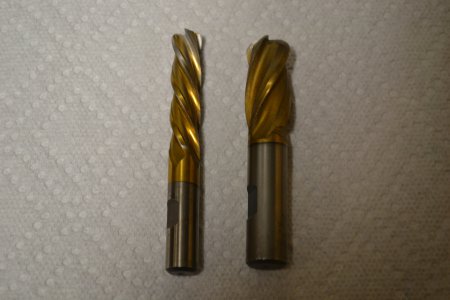- Joined
- Nov 16, 2012
- Messages
- 5,596
For any normal tool, you'll always want forward rotation -regardless of the direction of cut. With an end mill (for example) the edge of the flute must cut into the material. If it's spinning in the opposite direction, you'll just beat the tar out of the backside of the flutes and the tool is toast in a split second. For all I know, there may be reverse-spiral tooling -but I've never encountered it. In the case of indexed tooling (cutters with carbide inserts) they too have an edge side that must engage the material in order to cut. -And you can't simply reverse the insert because that would put all the force on the teeny-tiny screw that holds it down and it would probably cut loose in a heartbeat.
Only reason I've ever used reverse on a mill is to power tap left hand threads. As a mater of fact, left hand threads are the only reason I've ever reversed a lathe although you could conceivable flip a tool bit and cut on the other side of the workpiece. Doing that however puts upward force on the toolpost, compound, carriage etc and I doubt that's a good way to achieve good accuracy since, the entire setup was designed to work with downward force onto the ways.
Only reason I've ever used reverse on a mill is to power tap left hand threads. As a mater of fact, left hand threads are the only reason I've ever reversed a lathe although you could conceivable flip a tool bit and cut on the other side of the workpiece. Doing that however puts upward force on the toolpost, compound, carriage etc and I doubt that's a good way to achieve good accuracy since, the entire setup was designed to work with downward force onto the ways.
How about to climb mill (or not) in both directions of travel; or am I just confusing things?
M


